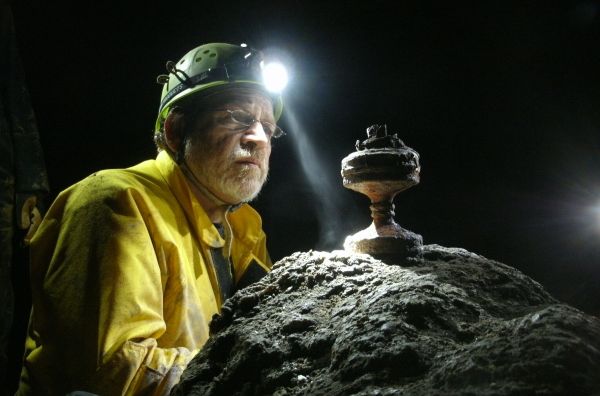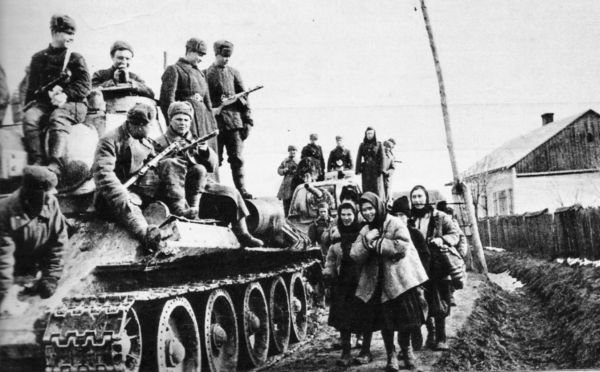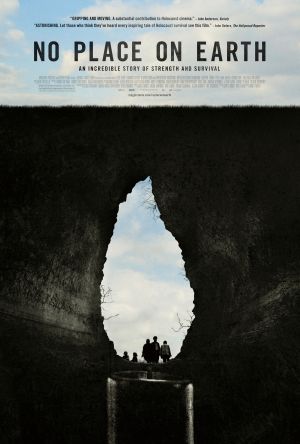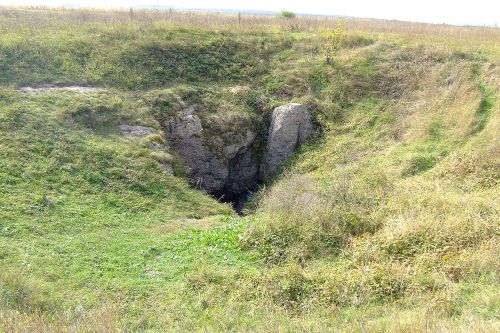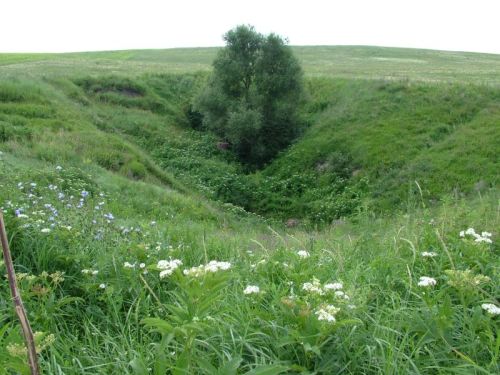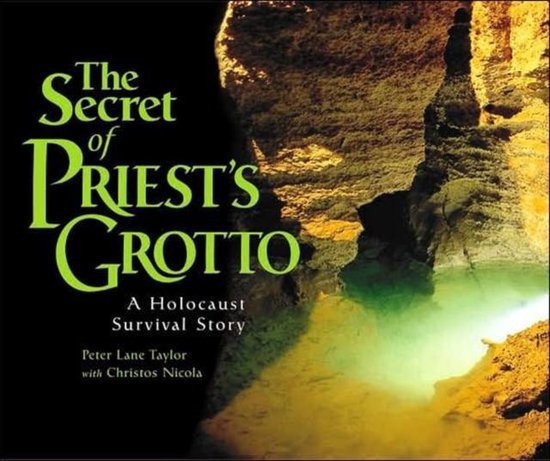Introduction
In 1972, the French speleologist Michel Siffre spent 205 days without interruption in a cave in Texas. With this he set an official record, because never before would someone have lived for so long underground. Living so long in constant darkness and isolation, without any sense of day or night, requires unimaginable perseverance, both mentally and physically. Nevertheless, several Jewish people in hiding in Ukraine during World War II would have lived continuously underground for much longer, namely 344 days. The American speleologist Chris Nicola discovered their remarkable story of survival.
It was in 1993, two years after the fall of the Soviet Union, that Chris Nicola was one of the first Americans to conduct research in the underground world of Ukraine. In the west of the former Eastern Bloc country there are seven large gypsum eaves in which impressive crystals have formed. The experienced speleologist visited three of these caves, of which Ozerna (about 280 miles southwest of Kiev) was the last. The cave is popularly known as Popowa Yama, or Cave of the Priest as it was previously located on the land of a local priest. The entrance to the underground cave system, which with a length of more than 77 miles is the fourteenth largest in the world.
Above ground there is nothing to see of the gigantic underground labyrinth. The entrance is in a weed-covered sinkhole, amidst vast wheat fields littering this part of Ukraine. After descending through a shaft that gives access to the underground system of corridors, local guides took Nicola to a part of the cave called "Khatki" (small house). This space was only 405 yards away from the base camp of the speleologists, but the road to it was almost a maze. In order to be able to find their way back easily, the cave researchers glued pieces of pink tape to the wall every 3 to 5 yards. To the amazement of the American, there were unmistakable traces of long-term human habitation in this hard-to-reach place.
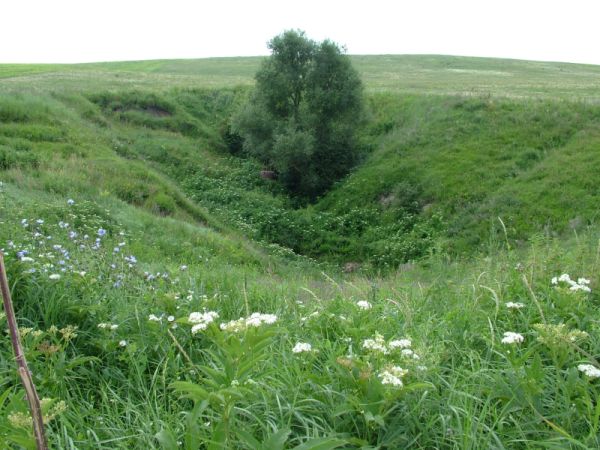
The sinkhole in which the entrance of the Cave of the Priest is located. Source: András Hegedűs / Panoramia.
At the bottom he found old shoes and buttons. A millstone and partly intact masonry walls proved to him that these were not abandoned belongings of fellow speleologists who mapped out this part of the cave in 1963. His guides told him that Jews had been hiding here during the Second World War. That was all they knew. Curious to find out exactly what had happened here during the war, Nicola went above ground to investigate. He spoke to several residents in nearby places, but nobody could give him any clarity. There were rumours that after the expulsion of the Germans, people had crawled out of the cave covered with mud. However, there were also people who claimed that the Jews in the cave had disappeared and were never seen again.
In search of survivors
The story of the Jewish people in hiding gripped Nicola after his return to New York. He would visit the cave several times in the years that followed, but it was not until 1997 before he found out more. A local speleologist then told him that in 1991 he had accompanied a Jewish family from Canada in an attempt to visit the cave. They would have lived in the cave together with other families in 1943 and 1944. Their community in hiding totalled 38 people, including a two-year-old boy and a 75-year-old grandmother. They had lived in the Cave of the Priest for about a year. Nicola was even more astonished than he already was. Never before had he heard that people had lived under the ground for so long without interruption.
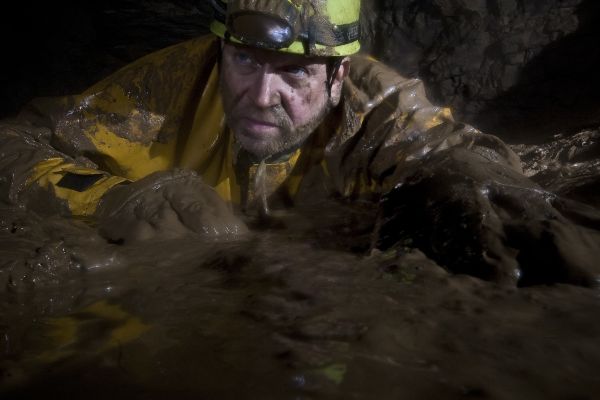
The American speleologist Chris Nicola. After his first visit to the Cave of the Priest, he could not get the story of the hiders out of his mind. Source: Magnolia Pictures
Michel Siffre is the official record holder with his 205 day stay in the Midnight Cave in Texas. The Frenchman did this as an experiment for the American space institute NASA, which wanted to gain knowledge about the consequences of living in isolation. The combination of isolated life and lack of daylight took its toll. At the end of the experiment, Siffre was a psychologically broken man. It was months before he was back to his old self. In Nicola's view, it was practically impossible for a group of untrained citizens without professional equipment (thermal clothing, electric lamps, etc.) to exceed Siffre's record. The people in hiding also had to gather food and fuel to survive the long winter in a hostile environment.
In an attempt to get in touch with survivors or next of kin, Nicola posted an appeal on his website. Four years went by without a response, until in 2002 he received an e-mail from someone who wrote that his father-in-law, Sol Wexler, was one of the survivors. Contact with this survivor was quickly established, because he also lived in New York, not so far away from Nicola. He was the only one of his family who survived the war, but told that there were other survivors in Florida and Canada. They were children and grandchildren of his mother's sister, Esther Stermer. After meeting and talking to them all, it became clear to Nicola how they managed to survive so long underground. His awe for this achievement only increased.
First hiding place in Verteba
Bloodlands
In the middle of the twentieth century, Ukraine was at the centre of the region described by the American historian Timothy Snyder as the "bloodlands". He is referring to the Eastern European countries where 14 million people were murdered during that period, at the hands of both Stalin and Hitler. Ukraine was severely affected. First by the famine caused by Stalin's forced collectivization of agriculture and then by the Great Terror, Stalin’s settlement with alleged enemies of the communist state. With the invasion of Nazi Germany during Operation Barbarossa in the summer of 1941, the bloodshed continued. Especially the Jewish population fell prey to it. Einsatzgruppe C, one of the four SS murder squads, murdered 33,771 Jews in Kiev, for example, in the Babi Jar ravine in two days. Nearly one million Jews in Ukraine (within today's borders) became victims of the Holocaust.
The Stermer family lived in Korolivka/Korolowka, a small rural town in Western Ukraine, which was within the Wehrmacht advance area towards the Black Sea and Stalingrad. The head of the family was the valued local trader Zeida. Together with his wife, Esther, he had six children: three boys (Nissel, Shulim and Shlomo) and three girls (Henia, Chana and Etka). The nearest larger town is Kamenets-Podolski, where on 27 and 28 August 1941 the largest mass murder of Jews took place. At that time 23,600 Jews (including women and children) were executed under the command of Higher SS and police leader Friedrich Yeckeln. Although their hometown fell into German hands shortly after the German invasion on 22 June 1941, it was not until the autumn of 1942 that the Jews living here also became victims of extermination.
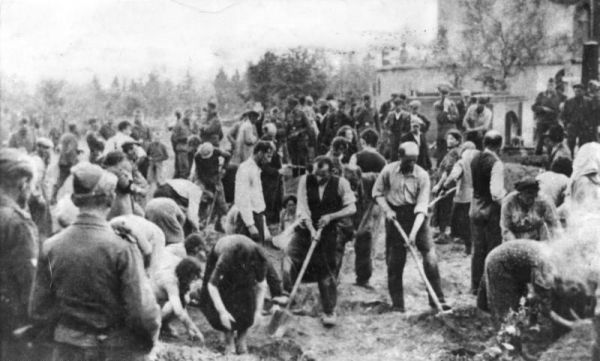
July 4, 1941. In the Ukraine, German soldiers force Jews to dig their own graves. Source: Bundesarchiv, Bild 183-A0706-0018-029 / CC-BY-SA 3.0.
Esther Stermer wanted to prevent her family from being extradited to the Germans, whom she distrusted, just as she had previously distrusted the Ukrainian and Soviet authorities. "She taught us early on, no matter who it was, that if they told you to do one thing, you always had to do the opposite," her son Shulim told Nicola. "If the Germans said go to the ghettos, you'll be safe there, you'll go to the woods or the mountains instead." That's why her eldest son Nissel had ordered them to find shelter. He found it in a tourist cave, Verteba, near the town of Bilche-Zolote a few miles west of Korolivka. With winter ahead, the cave, with its 5-mile-long system of corridors, would be deserted until spring. In the dark of the evening of 12 October, the Stermers and eighteen other Jews left for the cave. As the harvest season was over, the road was quiet. The group managed to reach their destination unnoticed.
In Verteba
In the cave, the people in hiding, using only candles as a light source, found a room where not many people had been. This is where they set up their living quarters. They built a stone wall that could be slid in [front] of the entrance to keep unwelcome visitors outside. Their new home was not ideal, because there was no water source and the cave was poorly ventilated so that every time they cooked, the inhabitants almost suffocated in the smoke. But at least it was safer there than above the ground. "The air in the outside world was poisoned by Nazism that urged everyone to kill as many of the surviving Jews as possible," Esther Stermer wrote in her memoirs. "Even outside the cave there was no sunshine for the persecuted Jews."
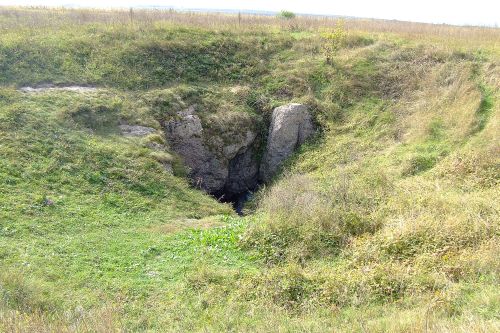
The entrance to Verteba, the first cave where Jewish hiders found shelter. Source: Wikimedia Commons.
To survive, the cave dwellers depended on food supplies from Zeida, Nissel and Fishel Dodyk, Henia's husband. The men were able to move freely above ground because they had permission to collect metals used by the Nazi authorities. Therefore they did not have to stay in the cave all the time. They obtained food on the black market and brought it to the cave every week. It was hard work. They had to move in the middle of the night due to snow, cold and icy winds and then descend into the cave on a slippery ledge. Then they had to crawl through a layer of mud at the bottom of the cave to reach the hiding place. Esther praised the "courage, understanding, strength, and determination" of her son Nissel, who was needed for this task.
The three men brought not only supplies, but also news from outside. They had found out that the Germans were planning to track down fugitive Jews in the coming spring. The risk that the people in hiding would be spotted in the cave was high. That's why they decided in February 1943 to settle further away from the entrance in the same cave. In order to be able to flee quickly, in case of discovery, Nissel, Shulim and Shlomo dug an exit upwards through a small fracture in the rock face. It took four weeks before they were above ground. For some of the cave dwellers it was the first time since they went into hiding that they saw daylight entering. Shulim made the emergency exit lockable and hung a chain to climb up with.
The Germans are here!
After having felt safe in the cave for about 150 days, things went wrong. The Germans had discovered the whereabouts and stormed into the cave. At that moment, the people in hiding were asleep. "The Germans are here!" warned one of those who had woken up to the noise. The Jews were unarmed and could not defend themselves. Shlomo was close to the entrance and had no chance to reach the emergency exit. He was arrested. In the light of the Germans' flashlights he saw that others had also been arrested, including his sister Henia and her little daughter Pepkale. A few people in hiding who slept closer to the emergency exit managed to get away. Exactly what happened after that is difficult to understand and can only be recorded from the mouths of the survivors.
Shlomo told Nicola that his mother, Esther, confronted the German commander during the raid. She stood face to face with him and protested fiercely. "So you found us. What do you think now?" That's what she would have said to him in a harsh tone. "Do you think that unless you kill us, the Führer will lose the war? Look at how we live here, like rats. All we want is to live, to survive the war. Leave us alone." Thanks to her brave actions, other cave dwellers had a chance to flee into the dark corridors of the cave. This allowed the Germans to pick up no more than eight people in hiding. On the way back to the entrance three more of them, including Esther and Shlomo, managed to escape from the Germans.
On the run again
After the German invasion, 23 people were left behind in the cave. They were scattered in the pitch-black of the underground corridors, some out of hearing distance from the others and without matches, candles or water. It took many anxious hours before they found each other again. For Shulim, the raid had been too much. When his mother, Esther, found him again, he sat trembling on the ground. "I ran to him, spoke to him, but he didn't answer," Esther wrote. "His eyes were glassy, his teeth clapped and he drooled from the corner of his mouth." It would take two weeks for the young man to recover sufficiently. "I had almost entered the first cave," Shulim asserted to Nicola. "I was in complete shock. I could not talk. [...] I couldn't walk. ... I could not hold a spoon and bring it to my mouth. It's a miracle I survived at all."
An additional problem with Shulim's nervous breakdown was that he was the only one who knew how to open the emergency exit hatch. Only after several attempts did the others manage to open the hatch. Once above ground they were able to hide in the high grass, while further on they heard the Germans with their dogs searching for another exit. The following weeks in April 1943, the Stermer family and the other people in hiding lived as fugitives in their own surroundings. Four of the Jews arrested by the Germans, including Henia and her daughter Pepkale and Sol Wexler, had managed to reunite with the rest after escaping from the local police station (Sol's mother and brother would never be seen again). The group alternately stayed in the boarded-up ruins of their house, which had been set on fire by the Nazis, and a shelter in an attic in Bilche-Zolote. They only moved during the night on remote country roads.
Cave of the Priest
A golden opportunity
Without a permanent and safe residence, the chances of survival of the people in hiding were small. Not only did they have to fear the Germans, but also the Ukrainian police, who cooperated with the occupying forces. A non-Jewish friend of the Stermers, the logger Munko Lubudzin, who lived in the forest outside Korolivka, pointed them to a cave a few mils outside the village, known as Cave of the Priest. Visitors did not enter the difficult-to-access plaster cave. Local farmers used the shaft that gave access to the miles long corridor system for dumping carcasses. Some of the men in the group, including Nissel and Shlomo, went out for inspection. Using rope and wooden beams as makeshift steps, they descended into the underground world. At the bottom, the mud came to their knees and smelled of rotting cattle. But deeper into the cave they found several rooms in which you could stand and an underground lake that would serve as a source of water for the people in hiding. "It was a godsend that we found this place," Pepkale told Nicola.
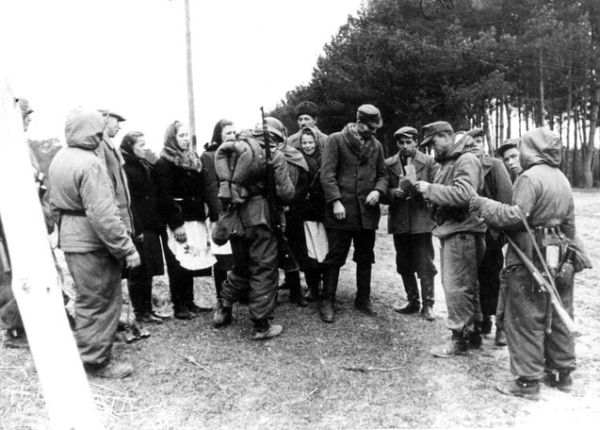
German soldiers and their Ukrainian helpers checking ID papers of Ukrainian citizens. The hiders had as much to fear from the occupiers as from the collaborators. Source: Yad Vashem
Five days later, on 5 May 1943, the other members of the Stermer family also fled into the cave, along with four other family members and 26 other Jews. In total there were 38 of them. Several of them would not see the light of day for almost a year. In the cave they found four interconnected rooms in which they set up their living quarters. For their cooking fire they found a well-ventilated room. With only supplies for two weeks, the men had to leave the cave again to supply the hiding community. However, nobody was allowed to move freely anymore, as was still the case for some in Verteba. So it was risky to leave the cave, both for the men themselves and because of the risk the hiding place being discovered. "Every time someone left the hiding place, it was a confrontation with direct and certain death," Esther wrote in her memoirs. "I practically went mad before I saw [my sons] return."
The men collected supplies from their friend Munko, who lived 4 miles from the cave. With him they exchanged their valuables for instance for, cooking oil, soap and matches. In the summer they stole potatoes and wheat from the land. They cut wood for the cooking fire in the forest, located 328 yards from the cave. Chopping wood was a risky activity because of the noise. When there was snow they used a homemade wooden sledge to transport the supplies. During the nights in the open air, the men kept an eye on when it was morning, based on the position of "the saucepan". Before it became light, they returned to the cave, which they could not enter until they had mentioned a password. One of the stragglers in the cave then removed a boulder that blocked the entrance.
Underground society
More than 60 feet down, a society emerged in which each person in hiding had his or her own role to play. Apart from collecting supplies, the men occupied themselves with making the cave habitable. They dug trenches so that there was less need to stoop, levelled the ground with stones and built stone walls against the draft. Nissel managed to lift a 154 lbs millstone, which he had stolen from a barn, onto his back into the cave. The millstone (for grinding grain) was perhaps their most important possession, along with a 6 inches long railway nail, with which they worked stones and made shoes and other utensils out of wood. Whenever possible they did their work in the dark to save candles and kerosene for lanterns. By walking barefoot they were able to find their way in the dark according to the texture of the floor.
The women were engaged in cooking, washing and repairing clothes. But they didn't just work in the cave. For example, Jewish holidays were also celebrated. Fishel Dodyk, the husband of Henia Stermer, led the religious services with the help of a prayer book and Yom Kippur was fasted there. However, the cave dwellers spent most of their time sleeping. As is the case with animals in hibernation, their biological clock gradually adapted to the lack of daylight. On average, they slept 18 to 22 hours, saving energy. Finally, they felt somewhat safe. "A long time ago, people believed that spirits and ghosts lived in ruins and caves," Esther wrote. "Now we could see that there were none here. The devils and the evil spirits were not in the cave but outside."
Misfortune and survival
Setback
However, safety was relative. Their hiding place was soon discovered, presumably because the men were spotted above ground and followed by the Germans or their collaborators. However, due to the poor accessibility of the cave, this meant no immediate danger. You could only descend into the cave one by one and with your feet first. Germans and Ukrainian policemen did not dare to descend. Had they done so, they were met downstairs in the cave by hiders armed with axes and sickles, who constantly guarded the entrance. Nevertheless, the Jews were not left alone. In July 1943, the entrance to the cave was closed by locals with soil and stones. It is quite conceivable that anti-Semitism was the reason for their actions or that they were incited to do so by the Germans.
The blocked entrance threatened the cave dwellers with starvation. It took the men four days to dig out a new passage a few yards further on. They also looked for a suitable place for an emergency exit. They marked their route through the cave with coloured rope to easily find their way back. They found a seemingly suitable location, but after several attempts they gave up digging because the tunnel kept caving in. That was a major setback for all the people in hiding. With autumn and winter ahead, it was important to collect supplies. The risk of being caught was greater than ever. During harvest time there were many farmers in the fields and the Germans had stepped up their patrols. Moreover, the men were weakened. Nevertheless, Nissel and Shulim managed to steal potatoes unnoticed. During their raid they slept in the attic of a local farmer.
On November 10th it almost went wrong again. While Nissel and Shulim were bringing in supplies, a supply bag got stuck in the shaft, blocking the entrance. At that moment the brothers were under the bag and thus locked up. Suddenly they heard footsteps. When they asked who was there, they got no answer. Then they heard gunshots and bullets flew in. The bag protected the Jews from the gunfire. Just as unexpectedly as the shooting had started, it stopped again. The attack turned out to have been carried out by the Ukrainian police. Locals, who had gathered around the entrance of the cave, would have warned the policemen that the Jews had several secret exits and that it was impossible to find them in the underground labyrinth. In vain, the policemen searched for other exits the following days. Once again the people in hiding had miraculously escaped.
The downfall of Hitler's Empire
When the first snow showers fell in December 1943, all the people in hiding entrenched themselves in the cave. By now they had lived more than 200 days underground. Their limited diet of grains and potatoes had greatly weakened them. Most of the cave dwellers were only at two-thirds of their weight. To stay warm, they slept close together. But no one thought of giving up. They held their own by each other's presence and passionate desire to witness the downfall of Hitler's empire. The first signs that their wish would be fulfilled reached them at the transition from winter to spring 1944. Through Munko they learned that there were echoes of gunfire and that in the dark an orange glow of explosions was visible above the hills in the east. The cave dwellers were relieved that the Red Army was approaching, but also uncertain about how long it would take.
After the front had moved back and forth above their heads a few times, at the beginning of April the signal finally came that it was safe. The logger Munko had thrown a bottle down in the cave with a note in it with the simple message: "the Germans are already gone". The cave dwellers waited another week before leaving the cave on 12 April 1944. For some of them it was the first time since 344 days that they saw daylight. Pepkale told Nicola that when she came out of the cave, she had forgotten what the sun was. "Turn off the light!" That's what she would have said to her mother. Shulim especially felt joy when he could leave the cave for good. "It was unbelievable that we could go out in daylight," he said. "It was a beautiful, beautiful day", his brother Shlomo recalled.
Loyalty
Outside the cave, the members of the Stermer family could hardly recognize each other. They had lost a lot of weight and were covered in mud. In the surroundings, the traces of the battle were clearly visible. The road to Korolivka was littered with the wrecks of German tanks and other war material. The place was almost completely in ruins. Of the more than 14,000 Jews who had previously lived in the area, only 300 had survived. Especially the fact that all members of the Stermer family were still alive is exceptional in the history of the Holocaust. They themselves cite their loyalty to each other as one of the most important reasons for their survival. "We knew we had a better chance of surviving if we stayed together," said Pepkale. "We knew that our family was always loyal to each other. [...] Even in the worst of circumstances, you could always look around and see your sister, your mother and the rest of your family. It helped us remember what we were fighting for."
Probably not all inhabitants of the Cave of the Priest were as lucky as the Stermers and their relatives. In a post-war statement to a social worker at a displaced persons camp in Germany, Sol Wexler stated that four cave dwellers died of starvation and that nine were murdered outside the cave. The bodies of the murdered Jews had been left in the snow in front of the entrance. According to the social worker's report, Sol mentioned the number of 19 survivors. Chris Nicola is currently conducting further investigation into these alleged deaths.
After the war
125 offspring
In post-war Ukraine there was no room for the Stermer family. Antisemitic violence would have cost the lives of both Zeida Stermer and Fishel Dodyk, Henia's husband. In June 1945 the Korolivka family left for good. They ended up in a displaced persons camp in Fernwald, Germany, where they were safe for the first time in ages. In 1949 the Stermers emigrated to the United States and Canada. For decades they did not talk to others about their lives in the cave. However, it kept them busy. Pepkale told us that after the war she never left the house without food, for fear of the hunger she had suffered in the cave.
In 2007, fourteen of the inhabitants of the Cave of the Priest were still alive. At that time they had 125 descendants. "It was worth fighting for survival", Shulim concluded with regard to his grandchildren. Nicola took some survivors back to their hometown and the caves to which they owed their lives in October 2010. Shulim was 92 at the time. It was not possible for him and his brother to descend into the Cave of the Priest, although Shlomo made a brave attempt to do so. The granddaughter of Shulim, the grandson of Nissel, who had already passed away, and the daughter of Shlomo did visit the subterranean world where their (grand) fathers lived for so long. The elderly brothers did manage to visit Verteba; the first cave where they went into hiding. Moving images of this can be seen in the docudrama "No Place on Earth" by Janet Tobias from 2012.
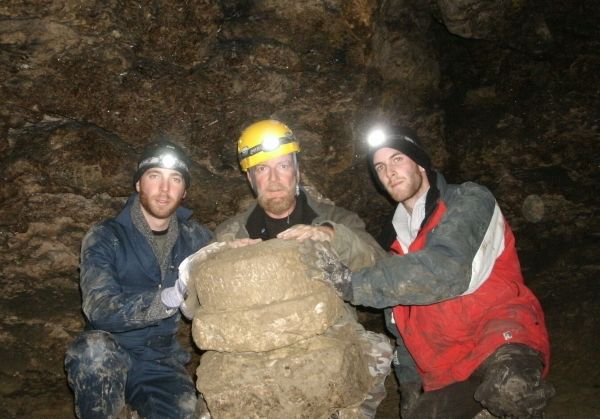
The son and grandsons of Nissel Steimer and the mill stone in the Cave of the Priest. It had been their (grand)father who dragged this heavy stone into the cave. Source: Chris Nicola
Six million stories
The history of the "Cave of the Priest" continues to occupy Chris Nicola. He regularly visits the cave, often accompanied by descendants of the survivors. Because of the things here that remind us of the war, he calls the cave "a time capsule". Perhaps his most impressive find in the cave consists of the family names of the survivors written with charcoal and the year 1943. Later visitors of the cave (colleagues of Nicola) added their names. Also outside the cave Nicola is busy with the special survival story. As leader of the Priest's Grotto Heritage Project, he is committed to keep the story alive and prevent genocide in the future. For him, the most important lesson of this history is "that the Holocaust is not just one story about how six million people died; it's six million individual stories". In 2007, together with Peter Lane Taylor, he published the educational booklet "The Secret of Priest's Grotto".
Information
- Article by:
- Kevin Prenger
- Translated by:
- Fernando Lynch
- Published on:
- 21-04-2020
- Last edit on:
- 22-04-2020
- Feedback?
- Send it!
Related sights
Related books
Sources
- Handwerk, B., "Jews Evaded Nazis by Living in Cave for Nearly 2 Years", National Geographic News, juni/juli 2004, op: news.nationalgeographic.com.
- Ostergard, C., "The Darkest Days", National Geographic Adventure Magazine, juni/juli 2004, op: www.nationalgeographic.com.
- Taylor, P.L., "Off the Face of the Earth", National Geographic Adventure Magazine, juni/juli 2004, op: www.nationalgeographic.com.
- www.noplaceonearthfilm.com
- www.priestgrotto.com
